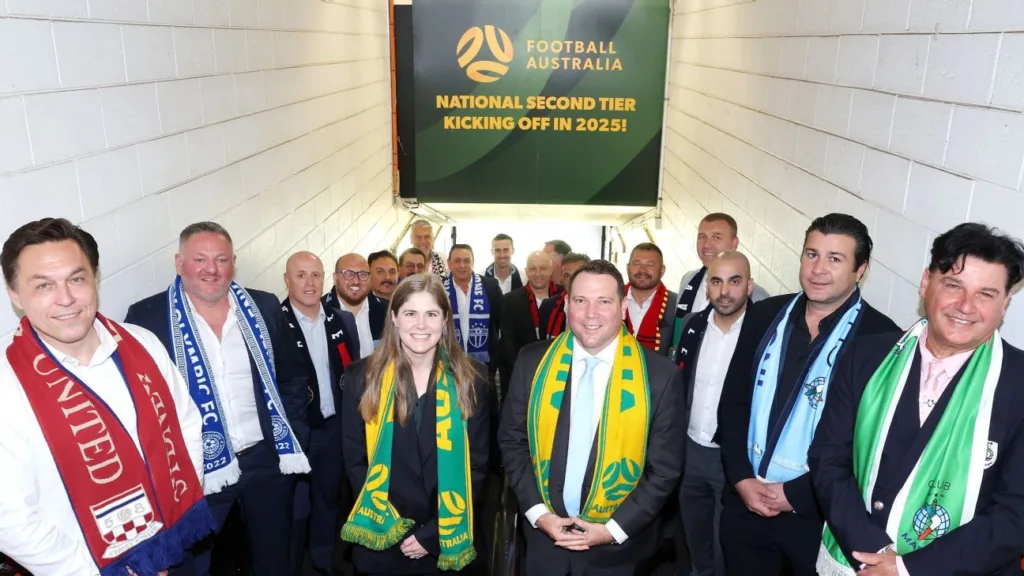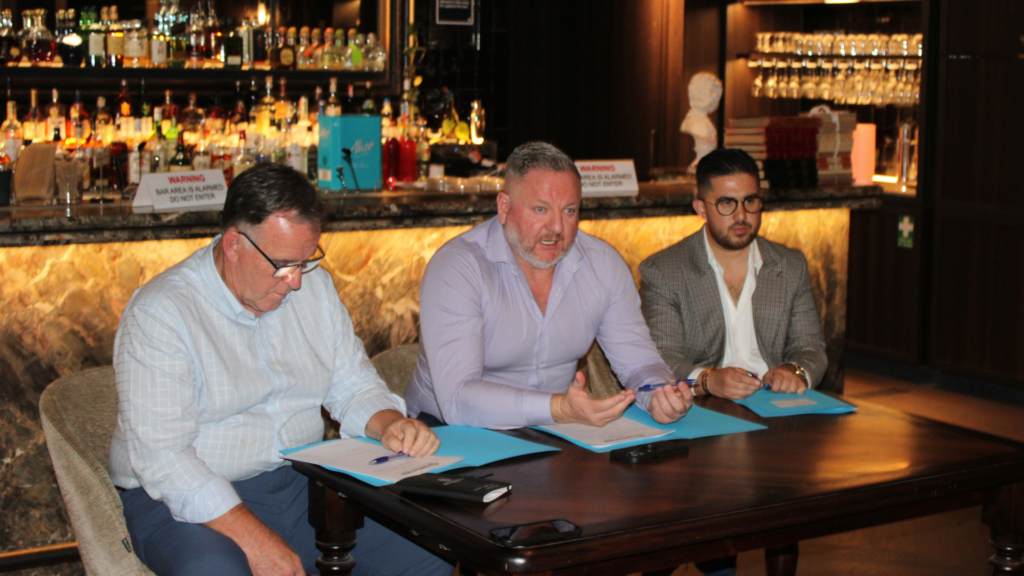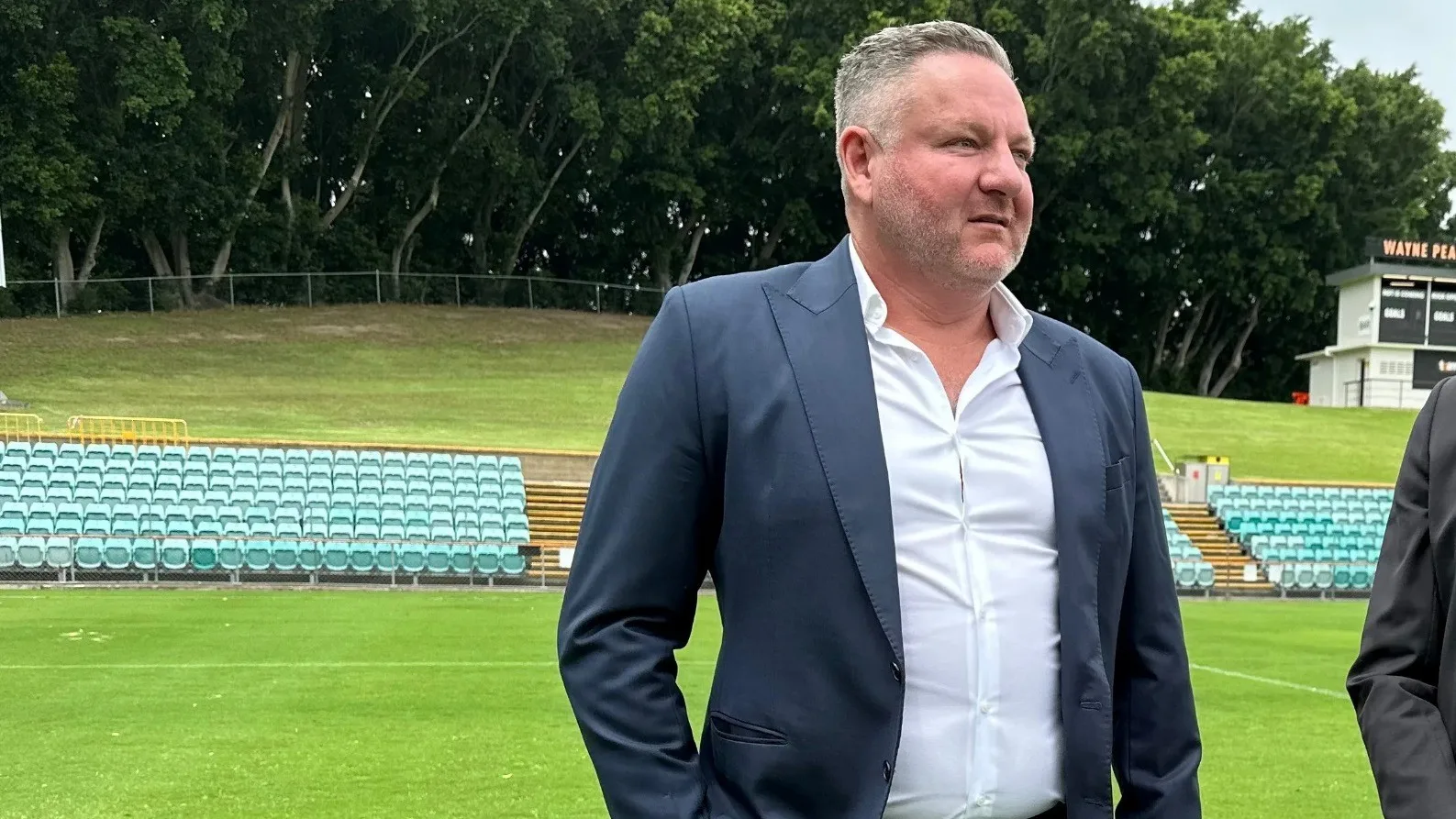Few names in Australian football stir the same emotion and history as Sydney Olympic. Born from migrant roots and built on community spirit, the club remains a cultural cornerstone — but one facing immense modern challenges.
From uncertainty over its Belmore Sports Ground home to mounting financial pressure and a shifting national football landscape, Sydney Olympic’s future hangs on a delicate balance of passion, persistence and reform.
Speaking exclusively to The Greek Herald, President Damon Hanlin opened up about the club’s battles behind the scenes — from stalled council negotiations and dwindling sponsorships to his personal investment in keeping the club alive.
The conversation, conducted ahead of Sydney Olympic’s debut in the Australian Championship, offered an unfiltered insight into a club fighting on multiple fronts: for sustainability, recognition and legacy.
The Belmore question:
The club’s senior team has called Belmore Sports Ground home for decades — a venue steeped in memories and history. Yet its future there remains unclear as the Canterbury-Bankstown Bulldogs proceed with their construction of a new Centre of Excellence, which has restricted Olympic’s access.

When asked whether the senior team would remain at Belmore in 2025, Hanlin was direct yet cautious.
“We’re not 100% sure yet. It’s all dependent on the construction that’s being undertaken by the Bulldogs for the Centre of Excellence. At this stage, we intend to play there, but we can’t use Peter Moore,” he explained.
The situation has been further strained by slow progress with the City of Canterbury-Bankstown Council. Hanlin said despite “multiple meetings” with the mayor and council officials, there has been little movement toward a long-term solution.
“They’re just not helping us. They’ve offered us Crest Oval. It’s becoming quite frustrating to be honest… no solution has been given to us,” he said.
The club has explored alternative venues, including Netstrata Jubilee Stadium, but cost remains a major obstacle.
“It’s a beautiful pitch, but it’s probably overkill for the level of football that NPL is… It’s mainly suited for the Championship,” Hanlin admitted, acknowledging that Sydney Olympic could only afford such a move if he continued to personally underwrite costs.
For now, Sydney Olympic’s leadership continues to weigh its options — a microcosm of the broader struggle for secure infrastructure that many heritage clubs face across New South Wales.
A new era begins:

The launch of the Australian Championship marks a watershed moment for clubs like Sydney Olympic — a step toward a semi-professional national second tier long advocated by the football community.
Sydney Olympic’s opening match against arch-rivals South Melbourne will rekindle memories of The Greek Herald Cup — a symbolic revival of Greek Australian football rivalry.
Asked what fans can expect, Hanlin said the new competition would bring both prestige and professionalism.
“Fans can expect another layer of football quality — the introduction of players that have been able to be attracted to the Championship because of its professional nature,” he said. “The mere fact is that we’re playing for something that is inaugural and everybody wants to win. I think everyone should be pleasantly surprised with the level of football and the competition.”
He confirmed that Sydney Olympic had made several strategic signings, particularly in the attacking and midfield lines.
“We’re going in this to win it — 100%. We’ve made some strategic signings around strengthening the attacking thirds of the team, and most recently, we’ve signed a very, very significant player in the midfield,” Hanlin revealed.
Despite optimism, criticism remains about the Championship’s closed format, with no immediate promotion or relegation. Hanlin, however, sees it as a necessary foundation.
“It’s got to start somewhere. The way Football Australia has treated this, it’s given an opportunity to sow a seed and let it grow organically,” he said, predicting that “more teams will have Fear Of Missing Out” and seek entry in future seasons.
When pressed on whether the competition was a genuine pathway to a fully open national league, Hanlin was confident: “It’s a genuine pathway. In the next few years, we will be subject to promotion and relegation… foundation clubs will eventually face relegation back into the NPL space,” he said.
Financial strain:
At the club’s most recent Annual General Meeting, Hanlin spoke openly about his financial commitment — including millions personally invested to cover inherited debts and player costs. Today, he admits that while the club remains operational, its stability rests largely on his shoulders.
“I am the one that keeps the club afloat,” he said. “The mere fact is, if you read the financials, the club is significantly in debt. It’s insolvent, and in the near future, it’s very difficult to see how that could be turned around, other than the Championship being broadcast and eventually getting broadcasting rights and sales of players.”

Hanlin acknowledged his patience is running out — especially with members of the community who choose to criticise rather than contribute.
“My patience is wearing very thin with certain people that bring nothing other than disruption but masquerade as fans… These football players don’t play for free. It takes money and lots of money to run clubs,” he said.
“We deliberately chose a pathway for younger players over the last few years. The performance drops a little bit, but that’s the only way to do it and to be managing the resources that we have.”
The president has also attempted to diversify revenue, including taking over operations of the Peter Moore canteen, which provided a small boost before the site’s redevelopment.
“We’ve lost that because of the construction,” he said. “The only real path for Sydney Olympic is to get out of the NPL space and into this Championship… and reap the rewards through trailing incomes like any professional league.”
While he confirmed the clearing of a $400,000 tax debt and payment of all players and staff, Hanlin noted that the club’s broader obligations require ongoing injections of capital.
“I’ve injected millions,” he admitted.
Leadership, rumours and reform:
In recent months, speculation has swirled around Hanlin’s potential investment in the A-League and possible links to the Central Coast Mariners. He would only confirm that discussions were ongoing.
Asked about newly appointed board member Rodolf Salem, Hanlin said the decision was rooted in trust and strategic oversight.
“It’s only new, but he’s a trusted figure in my life and business life, and I think he’ll bring a lot of acumen to the operation of the club,” Hanlin said.
One of his greatest frustrations lies in the lack of state government support.
“Other clubs in the area are all receiving government handouts or assistance. And Sydney Olympic continues to be turned away,” he said.
He contrasted that with his dealings with Football Australia, which he described as “a breath of fresh air.”
A plea to the community:
After years of personal investment and tireless advocacy, Hanlin’s final message was simple but heartfelt.
“I just want a positive attitude towards the club. If you love the club in any which way — even love it a bit as much as I do — then just come down to the game,” he said. “Bums on seats. Love the social media. Engage with the social media. Come alive, because that’s what a club is.”
Despite exhaustion, his hope is that unity can restore Sydney Olympic to its rightful place in Australian football.
“We might be on the up and up again, coming out of the hole of many, many years in New South Wales football,” he said. “The only way we can do it is together. I can’t do it on my own all the time. It’s impossible.”

